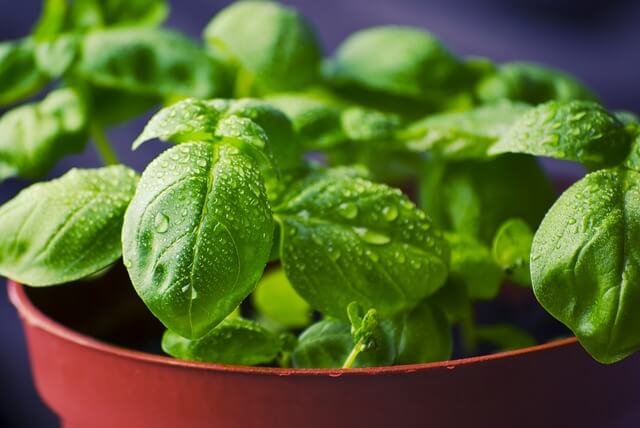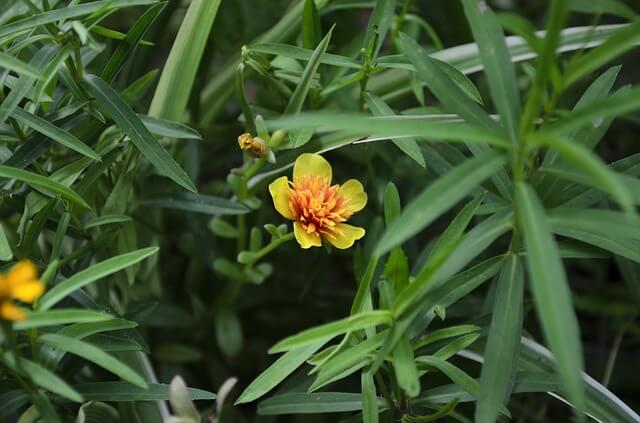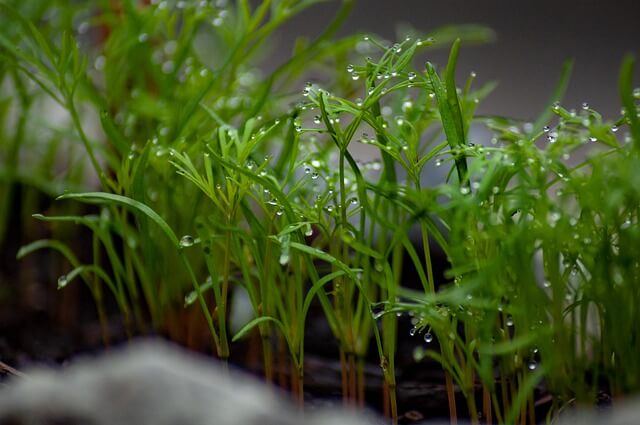4 Herbs That Grow Well With Parsley – Must See!
Parsley is a versatile herb that can grow and prosper beside other herbs without issues. The following are four herbs that grow well with parsley: basil, cilantro, tarragon, and dill.
Parsley is an adaptable herb that can grow next to a few other herbs without issue. Basil, cilantro, tarragon and dill are all excellent choices for planting alongside parsley in the garden or on the windowsill.
Table of Contents
Basil
- Parsley and basil are herbs that both need the same growing conditions.
- These two herbs are often planted together because they share similar needs. They both like lots of sun, moist soil, rich in organic matter, and should be watered daily.
- Planting these two plants together can save you time as well as money on gardening supplies because they will have each other’s backs when it comes to survival.
- These two herbs are often planted together because they compliment each other well. They also make a beautiful garden pairing.
- Parsley is an herb with curly leaves and a sharp, peppery flavor. Basil has dark green leaves and an earthy taste, like cloves or nutmeg, with notes of cinnamon. Parsley’s texture can be soft enough to use as a salad leaf while basil’s strong flavor makes it popular for sauces and pesto.
- Basil has a stronger flavor than parsley does, so it is usually used sparingly in dishes where you want its taste to really shine through.
- It is important to plant parsley first because its long roots will help hold the soil in place for other plants like basil which have shorter roots.
- These two herbs are often planted together deter pests.
- Basil is a great companion plant for tomatoes, which can deter pests like whiteflies from attacking your plants
- Parsley attracts pollinators such as bees and butterflies to help fertilize flowers in your garden
- Parsley is a biennial plant, meaning it takes two years to grow before it flowers.
- Basil is an annual plant, so it can be harvested every year after planting from the time of its first flowering until winter arrives.
Cilantro
- Parsley and Cilantro are both great plants to grow together.
- They have the same water requirements, need full-sunlight, and share space very well.
- Cilantro grows taller than parsley so it will be able to shade the parsley a little bit from direct sunlight in the afternoon.
- Parsley also provides ground cover for cilantro as it spreads out in an open area, which is helpful when trying to prevent weeds from growing next to your herbs.
- Growing cilantro with parsley is an easy way to grow your own herbs year-round, since both plants thrive in the summertime.
- Cilantro will flourish even if it has little sun exposure or low amounts of water.
- Both plants need a large pot so their roots have room to grow deep.
- Parsley is a more hearty plant and requires less water than cilantro, so it can survive even if there is a drought.
- Cilantro is best planted with about 2 weeks of planting time before you start to see your parsley grow
- Cilantro is a popular herb used to add flavor to dishes. It’s also used in many Latin American dishes such as salsa verde or pico de gallo.
- Parsley is often mixed with cilantro because it tastes great with both sweet and savory foods.
- Parsley and cilantro are two of the most popular herbs used in cooking.
- Cilantro is often used as a garnish or a flavoring agent while parsley is typically added to dishes for its flavor, texture, and health benefits.
Tarragon
- Parsley and Tarragon are a great pair when grown together.
- Tarragon is a moisture loving herb that prefers to be planted in the shade or with an afternoon sun exposure.
- Parsley is more tolerant of hot, dry conditions but still does best when given some water and fertilizer.
- If you’re looking for something green to add flavor to your meals this summer, tarragon might just be the answer!
- When grown together, parsley will help keep the moisture levels in the soil up for tarragon. This is because when its leaves decompose they release water back into the ground to replenish it with nutrients.
- Parsley also prevents weeds from growing near tarragon by competing for light so it has more access to sun rays.
- Tarragon is more of an annual plant with slender stems that grow up to 3 feet tall and has green leaves that have a glossy finish.
- Parsley is hardier than tarragon as it can survive through the winter season if grown indoors or outdoors in milder climates like California or Florida.
- Planting tarragon near parsley will help keep both plants healthy.
- Tarragon and parsley make for a great combination when grown together in the garden or on your windowsill.
- Parsley is a biennial plant that takes two years to fully mature, while tarragon is an annual plant that will grow every year as long as it has enough water and nutrients.
- Parsley and tarragon are often used together in dishes such as Béarnaise sauce, chicken with tarragon, and potato salad.
- Tarragon is known for its strong flavor that enhances the flavor of other herbs.
- Parsley has a milder taste than tarragon but also gives food a fresh finish.
Dill
- Parsley and Dill are two herbs that combine well. Parsley is the more robust of the two, but both enjoy much of the same environment.
- Both plants require full sun, moderate water, a pH between 6-7 for optimal growth; although parsley can grow in a wider range of soil conditions from neutral to alkaline as long as it is not over saturated with water or drained too often.
- The two plants share many common attributes, such as both preferring to grow in cool weather, being full-sun plants (with a preference for morning sun), having similar water needs and germination requirements, producing similarly sized leaves with white flowers in late summer/early fall (although parsleys are larger).
- Both of these herbs have a long history in traditional cuisine as they can be used for flavoring soups, sauces, dressings, salads or even pasta dishes. While parsley is mainly used for its leaves and seeds which come from a long stemmed curly leaf plant, dill has mostly been grown for its seeds.
- The parsley plant is low-growing, so it will need to be watered more often than the taller dill plant. These conditions make them compatible companions in a garden bed or pot on a windowsill.
- Both plants can be grown in pots or in a garden bed. The pot is an easier way to grow these herbs as they require little maintenance and can be easily moved indoors during winter months.
- Parsley is a strong-flavored herb, while dill has a more delicate flavor.
- Parsley contains beta-carotene, which helps protect the eyes from age-related macular degeneration. It also contains calcium and magnesium, which help regulate blood pressure and promote heart health respectively.
- Dill is high in iron content as well as vitamin C; both of these properties support brain function and healthy skin for a long life span













